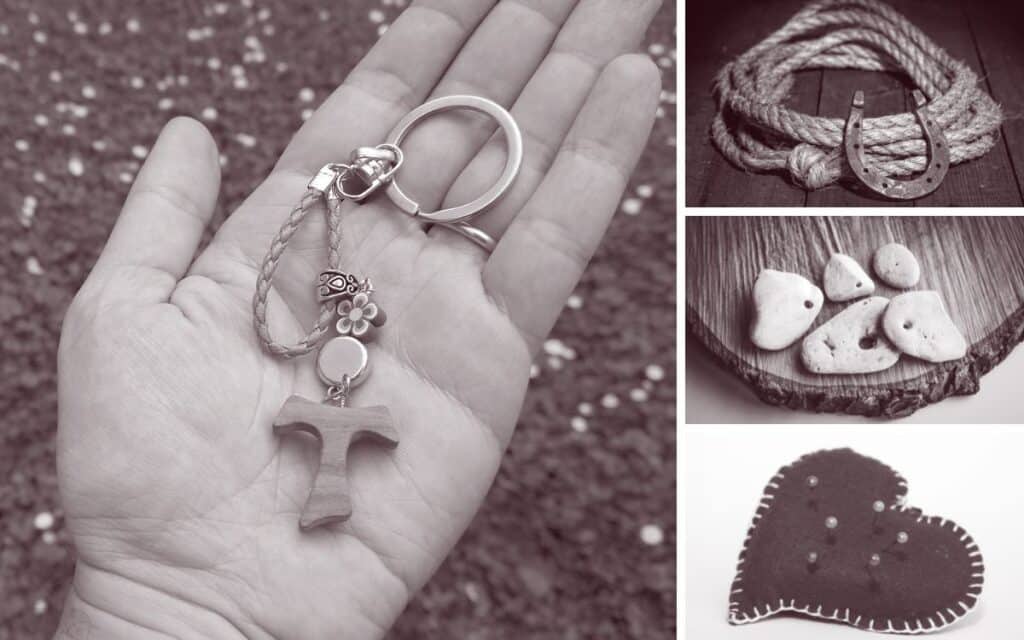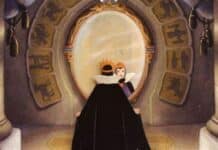For centuries people have used protective charms to defend against attacks from supernatural beings such as witches and fairies. GAYLE FIDLER reveals some examples from Northern England of customs and practices that have been used to ward off evil.

The Elsdon Horse Heads
The 12th Century church of St Cuthbert, in Elsdon, Northumberland, is said to be one of the resting places of the body of St Cuthbert. Monks fled Lindisfarne carrying his coffin, in fear of Viking attacks and used the church as a stop off point.
During 19th century restoration work, three hidden horse skulls were uncovered in the belfry of the church.
Horse skulls have been found hidden in many buildings throughout the world. The exact reason for them being placed in walls, floors and ceiling cavities is unknown, however several theories have been put forward.
In some folk-dance customs, it was believed that nailing horse skulls under the floor helped enhance the sound of the dancers. The Elsdon church horse skulls may have been placed with the bells to promote the acoustics.
The ringing of church bells was believed to frighten away unwelcome spirits, so it is possible that the horse skulls were put there to keep evil at bay.
The skulls are now on display in the church in a specially made case.
Northern Necklace
A very old superstition, which is still used today, is the belief that wearing an amulet around the neck can protect against evil.
A popular version of this found across the North East, was a necklace carved in the shape of a T or Tau cross. It was believed that this could protect against fairies, witches, and evil spirits. It was recommended, for maximum protection, that the cross should be carved from the skull of a sheep.
Heart of pins
A popular cure against bewitching, in many towns and villages involved the burning of an animal heart after it had been pierced by pins or nails. There are some variations on this story, where the burning is said to draw a guilty party to a house where they have committed a wrongdoing.
A surviving example of one of these charms from Durham, is held in the Clarke Charm Collection, which is cared for by Scarborough Museums Trust in North Yorkshire. Amongst the collection is a pigeon’s heart, pierced with 8 pins. The artefact dates from circa 1841 and is said to have been made to exorcise a witch.
An old northern tale of burning a heart, tells of a young woman who helped her grandfather cure a bewitched child. The pair pricked a heart with pins and threw it on the fire. When the heart started roasting, the sick child exclaimed that her own heart felt like it was on fire. After the heart had burnt away, the witch’s spell was broken, and the child was cured.
Another tale is of a farmer whose cattle began to die mysteriously. The farmer consulted a local wise man who told him that his herd had been cursed by a witch.
The farmer took a heart from one of the dead animals and pierced it with nails and pins and then placed it on a fire built from rowan wood.
At the stroke of midnight, the farmer read a bible verse over the burning heart. Suddenly he heard a great commotion, coming from outside his house. Something terrible was trying to get in. The farmer poked at the ashes of the heart, as he continued to read from the bible. As the last of the embers burned away, the noise from outside stopped and the farmers stock came to no further harm.
The Adder Stone
The adder stone or holy stone is a stone with a hole through it. The stones are known by various names, such as hag stones, in many parts of the country. In North East folklore it was believed that the hole was made by the sting of an adder.
The stones were hung above horses’ heads in their stables. It was believed this would stop witches stealing the animals and riding them at night.
A further precaution could be taken by hanging the stones above household beds. This was in case the witch preferred to take a human for a midnight ride.
Blacksmith
Blacksmiths have a long association with myth and magic. In Stamfordham in Northumberland, it was believed that if a child was bewitched, they should be taken to the blacksmith’s and laid down on the anvil. The blacksmith would raise his hammer as if to strike the child, but instead brought it down gently three times on the child’s body. The child should then be cured.
In Durham and Northumberland, horses and people were also protected by placement of a horseshoe. The shoes were commonly nailed above or on stable and house doors, to keep witches away and prevent evil forces entering a property.
Rowan
The rowan tree has a long history in British folklore as being used as a defence against witchcraft. It was believed that if a rowan tree was planted in your garden, it would protect the property.
In the village of Edmundbyers in County Durham, the locals were scared of an 18th century witch called Elizabeth Lee. The villagers believed that Elizabeth had the power to rise from her grave and do them harm. They planted rowan trees around the village to protect them from her deathly wanderings.
Carrying sprigs of rowan was also thought to defend against evil powers. In Sunderland, there is a tale of a mother who believed her child to be bewitched, so she sewed rowan twigs into the child’s clothing to break the curse.
These are just a few of many protective northern measures that can be used to ensure the witches don’t spirit you away this spooky season!
Tell us your thoughts on this article in the comment section below!







